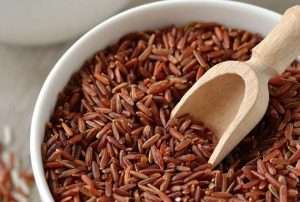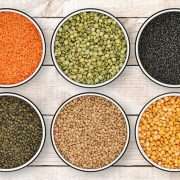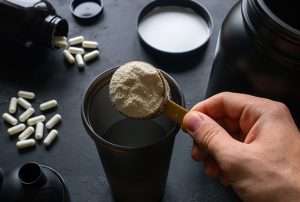Is Brown Rice A Good Plant Protein Source?

Rice is a staple food crop grown all over the world. There are so many varieties available in the market today – starting from long-grain basmati rice, black rice, sticky (glutinous) rice to the famous white rice.
Among them, Brown rice is often associated with healthy eating. It is usually less processed compared to other forms of rice.
Brown rice is a whole grain which contains three parts of the grain – the outer layer, fibre-filled layer, bran; the nutrient-rich core, germ; and the starchy middle layer, endosperm. In the case of Brown rice, only the hull (the hard protective cover) is removed, which keeps the nutrition-packed bran and germ intact.
This makes brown rice retain the nutrients – like vitamins, minerals and antioxidants, which white rice usually lacks.
Meanwhile, on the flip side white rice is a refined grain, meaning that the bran and the germ are removed, which strips away much of the fiber and nutrients.
High Nutritional profile of Brown Rice

One cup of brown rice contains (1):
- Calories: 216
- Carbs: 44 grams
- Fiber: 3.5 grams
- Fat: 1.8 grams
- Thiamin (B1): 12% of the RDI
- Protein: 5 grams
- Niacin (B3): 15% of the RDI
- Pyridoxine (B6): 14% of the RDI
- Pantothenic acid (B5): 6% of the RDI
- Iron: 5% of the RDI
- Phosphorus: 16% of the RDI
- Magnesium: 21% of the RDI
- Zinc: 8% of the RDI
- Copper: 10% of the RDI
- Selenium: 27% of the RDI
- Manganese: 88% of the RDI
Just one cup of rice can fulfil all your daily requirement of manganese.
Brown rice is exceptionally high in manganese, which is vital for bone development, wound healing, nerve function and blood sugar regulation.
A deficiency in manganese can lead to low fertility, impaired growth, bone demineralization and has a higher risk of developing metabolic syndrome.
This whole grain is also a good source of folate, riboflavin (B2), potassium and calcium.
Brown rice provides powerful plant compounds as well – like phenols and flavonoids, a class of antioxidants that reduces oxidative stress in the body.
These antioxidants also help to prevent cell injury and reduce inflammation.
Health benefits of brown rice

1. Brown rice is good for weight loss
It is always a good idea to replace refined grains with whole grains.
Refined grains like rice, white pasta or white bread lack the fiber and nutrients required by the body.
1 cup of brown rice (158 g) = 3.5 g of fiber
1 cup of white rice = <1 g of fiber
Fiber helps you keep fuller for a long time, which might help you in consuming fewer calories overtime.
Replacing white rice with brown rice might help in reducing belly fat as well.
Plus, brown rice eaters might experience significant decrease in blood pressure over the period of time.
2. Better choice for those with diabetes
Consuming brown rice instead of white rice has many benefits for people with diabetes.
Studies show that a higher glycemic index increases blood sugar, insulin and gherin, a hormone that drives hunger.
Brown rice has a lower glycemic index than white rice, which means it’s digested slower and has less of an impact on blood sugar.
This also reduces the chances of developing type 2 diabetes.
3. Brown rice is natural and gluten-free
Gluten is a protein found in wheat, barley and rye that causes stomach aches, bloating, diarrhea and vomiting in people who are allergic or intolerant to it.
For such people, brown rice is a very good option.
4. Brown rice is good for the heart
Apart from being a good source of fiber, brown rice contains compounds called lignans that is known to reduce heart disease risk factors.
Foods items like flax seeds, sesame seeds and nuts contain lignans and have been associated with reduced cholesterol, lower blood pressure and decreased stiffness of artery.
How much protein does brown rice have?

1 cup of brown rice = 5 grams of protein
This is about 10 per cent of the daily value recommended for a healthy adult.
Even though brown rice does not provide us with all the necessary amino acids, it contains 37% of the total protein and essential amino acids.
When made from sprouted whole grain brown rice (which many on the market are), rice protein also offers the benefits of sprouted grains, including an increase in bioavailability of vitamins, fiber, folate, and amino acids.
Rice also contains an array of antioxidants, including phenolic acids, flavonoids, anthocyanins, among others. Such antioxidants can promote health by protecting cells from damaging free radicals and reactive oxygen species.
Both brown rice and pea proteins are great nutritional sources of plant protein. While pea protein contains a full amino acid profile, rice protein does not.
However, when paired together they create a full amino acid profile – so essentially what rice protein lacks in amino acids, pea protein makes up when paired together.
You can also buy our Plant-based protein powder from Amazon here:















